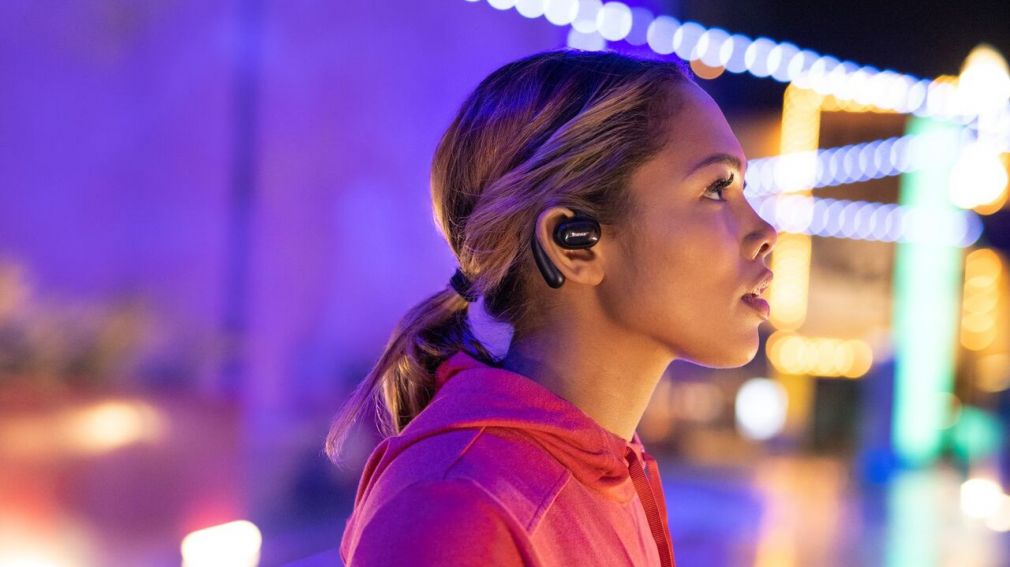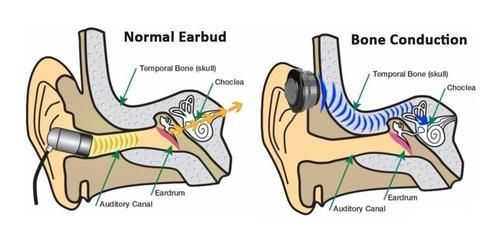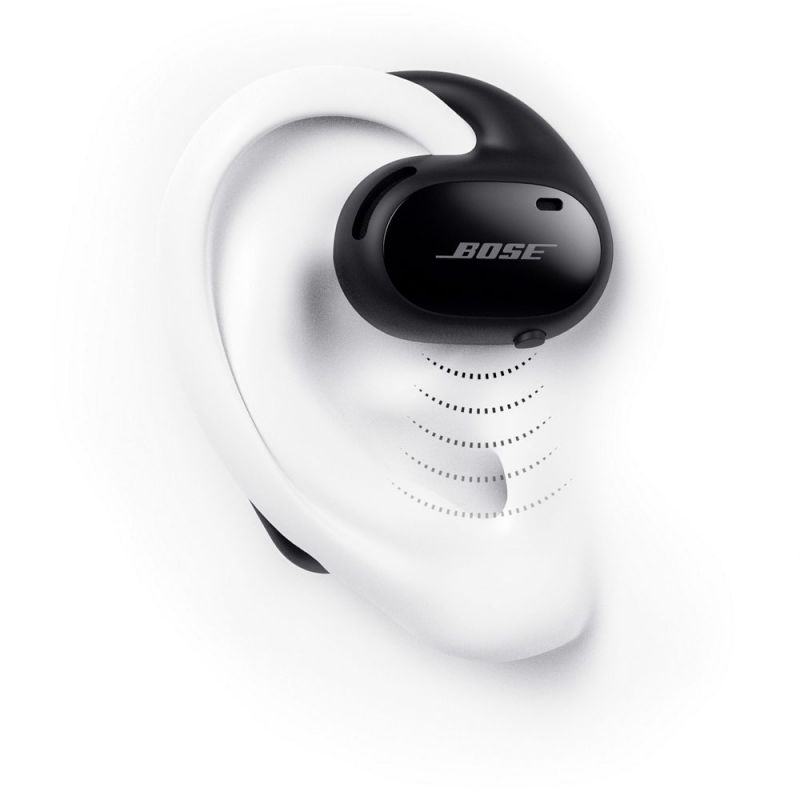NAMM Member Offers Options in Open-Ear Headphone Technology

Bose builds on a tradition of product innovation by offering an alternative option for headphone users with its Bose OpenAudio™ technology.
In 1964, Amar Bose founded the Bose Corporation with a passion for speaker systems. The company’s start was inspired by a purchase that did not live up to its expectations. In 1956, after purchasing a disappointing stereo system, Bose turned to Y. W. Lee, his thesis advisor and professor from the Massachusetts Institute of Technology (MIT), to fund his new venture. The NAMM Member began with a mission to create a speaker system that utilized multiple speakers aimed at surrounding walls to reflect sound and replicate the sound listeners experienced at concert halls.
Two years after its beginnings, Bose launched its first product, the Bose 2201, a unit consisting of 22 speakers, many of which faced away from the listener. The Bose 2201 sat in the corner of a room and reflected sound off the walls resulting in an effect that gave the illusion of increased room size. Considered a market failure, Bose ceased production on the Bose 2201 after a few years. Despite the apparent failure, Bose used the experience to argue that the accepted audio system measurement techniques were not effective in evaluating the goals of sound reproduction and that the best measure of audio quality should be the listener’s perception.
In 1968, Bose took these beliefs and launched the Bose 901 stereo speaker system, which used eight mid-range drivers pointing towards the wall behind the speaker, and a ninth driver pointed at the listener. Achieving a dominance of reflected over direct sound in-home listening spaces, the Bose 901 was extremely unconventional compared to other systems on the market. This time, Bose found success, and the Bose 901 remained in production until 2016. Since its launch, the Bose Corporation has continued to grow and innovate
One of the most recent technological developments from Bose is in its headphone division. An effort to continue improving the listening experience while also considering auditory safety has led Bose into the world of open-ear headphones. Unlike traditional headphones, open-ear headphones don’t go in or cover a listener’s ears. It may be a bit of a struggle to picture headphones that don’t sit in or cover your ears, but you’ve probably seen open-ear headphones before, most likely integrated into a pair of sunglasses. However, open-ear headphones aren’t limited to accessories but also include “bud” style products that rest on the natural curve of the external ear. By removing headphones from the inside or covering the ear, users can hear their music and their surroundings simultaneously, a feature that helps enhance safety for runners. Beyond the safety benefits, open-ear headphones are described as more comfortable to wear for extended periods.
Most open-ear headphones utilize bone conduction technology to send vibrations directly to the inner ear, bypassing the eardrums (think a cochlear implant for the deaf and hard of hearing community). Bone conduction is less tiring and less harsh on the ears than traditional headphones or earpieces. In addition, everyone can utilize devices equipped with bone conduction technology, including those with hearing problems or perforated eardrums, and worn in conjunction with hearing protection. Even more astounding is the ability for bone conduction technology to be utilized underwater.
To bridge the gap between open-ear headphones and bone conduction technology, Bose has introduced its OpenAudio technology. Instead of sending sound through the user’s bones, OpenAudio sends sound waves through the air, creating a more natural listening experience. Despite sending the audio into the air, the technology delivers “rich, full-range sound while minimizing what others nearby can hear” through a 16mm driver in each earbud. The icing on the cake is that Bose OpenAudio products don’t require a tight fit; they simply rest securely on the natural curve of the ear.
For more information about Bose’s OpenAudio technology, please visit https://www.bose.com/en_us/better_with_bose/open-ear-headphones.html.

